Rasbosoma spilocerca
Dwarf Scissortail Rasbora
Classification
Cyprinidae
Distribution
Native to the Lower Mekong River basin in Laos, Thailand and Cambodia. In Thailand it’s restricted to the eastern side of the country and has been recorded from Sirindhorn Reservoir in Ubon Ratchathani province, Bung Khong Long (lake) in Nong Khai province and an un-named reservoir in Nakhon Phanom province. One interesting collection locality is an area of wetland called Kud Ting in Nong Khai where it lives sympatrically with Rasbora rubrodorsalis and Boraras micros. In 2008 the Thai government proposed that Kud Ting be designated a protected Ramsar site due to the diversity of species found there. A major population in Cambodia can be found in the great lake of Tonlé Sap and surrounding swamps.
Habitat
Inhabits shallow bodies of water such as swamps, marshes, floodplains and reservoirs. Submerged vegetation tends to grow thickly in these predominantly clear waters and it is also known to move into temporarily inundated areas during the wet season. It has been found in flowing waters on occasion but never in large numbers.
Taking Bung Khong Long as an example for those wishing to attempt a biotope set-up submerged aquatic plant species in the lake and surrounding floodplain include Hydrilla verticillata, Cerotophyllum dermersum, Chara zeylanica and Blyxa echinosperma, Salvinia cucullata is found floating on the surface and emergent plants comprise Eleocharis dulcis, Nelumbo nucifera, Lepironia articulata and Nymphaea lotus. Other fish species are Boraras micros, Brachygobius sp., Betta splendens, Betta smaragdina, Clupeichthys aesamensis, Odontobutis aurarmus, Krytopeterus bicirrhis, Clarias batrachus and Tetraodon leiurus although clearly not all of these can be kept together in an aquarium.
Maximum Standard Length
Around 1.2″/3cm.
Aquarium SizeTop ↑
A tank measuring 18″ x 12″ x 12″/60cm x 30cm x 30cm/42.5 litres is big enough to house a small group of these.
Maintenance
Choice of decor is not especially critical although the fish tend to show better colouration when maintained in a well-furnished set-up with a dark substrate. It is therefore an excellent choice for the carefully-aquascaped planted set-up. The addition of some floating plants and driftwood roots or branches to diffuse the light entering the tank also seems to be appreciated and adds a more natural feel. Filtration does not need to be particularly strong as it mostly hails from sluggish waters and may struggle if there is a fast current in the tank. Never add this fish to a biologically immature tank as it’s susceptible to swings in water chemistry and be sure to add a tightly-fitting cover as like most rasboras it is an accomplished jumper for its size.
Water Conditions
Temperature: 73 – 79°F/22 – 26°C
pH: 6.0 – 7.0
Hardness: 2 – 10°H
Diet
Stomach analyses of wild specimens have revealed it to be a micropredator feeding on small insects, worms, crustaceans and other zooplankton. In the aquarium it will accept dried foods of a suitable size but should not be fed these exclusively. Daily meals of small live and frozen fare such as Daphnia, Artemia and suchlike will result in the best colouration and encourage the fish to come into breeding condition.
Behaviour and CompatibilityTop ↑
This species is very peaceful but does not make an ideal community fish due to its small size and somewhat timid behaviour. It will do best when maintained alone or with other diminutive species. A community based around one of its native countries or river basins would make an interesting project with possibilities from Thailand alone including various Trigonostigma, Pangio, Lepidocephalichthys, Boraras and smaller Rasbora species. As always when selecting a compatible community of fish proper research is essential and in this case adult size must be of primary consideration.
It’s a schooling species by nature and really should be kept in a group of at least 8-10 specimens. Maintaining it in decent numbers will not only make the fish less nervous but will result in a more effective, natural-looking display. Males will also display their best colours and some interesting behaviour as they compete with one other for female attention.
Sexual Dimorphism
Males are noticeably smaller and slimmer than females and tend to be more intensely coloured. When in spawning condition the body of the male takes on a pinkish hue and the fins become suffused with yellow.
Reproduction
Like many small cyprinids this species is an egg-scattering, continuous spawner that exhibits no parental care. That is to say when the fish are in good condition they will spawn often and in a densely-planted, mature aquarium it is possible that small numbers of fry may start to appear without human intervention.
However if you want to increase the yield of fry a slightly more controlled approach is required. A tank measuring 18″ x 12″ x 12″/60cm x 30cm x 30cm/42.5 litres or a little larger is ideal for this type of project. It is best kept dimly lit and the base covered with some kind of mesh of a large enough grade so that eggs can fall through it but small enough so that the adults cannot reach them. The widely available plastic ‘grass’-type plants can also be used and work very well (see image). The water itself should be of slightly acidic to neutral pH with a temperature in the range suggested above. As a guideline forum member Mick Wright has had great success with this species and spawned it at pH 7.0, gH 4, 74°F using a substrate composed half of fine sand and half plastic plants with a small clump of Java moss. Filtration should be very gentle and an air-powered sponge-type unit is best as it will not suck in eggs or fry.
A group of adults can then be added and provided they are well-fed spawning should present few problems. Mick told us that spawning occurs at first light and always over the plastic plants.
Incubation is temperature-dependant to an extent but should take around 24-36 hours with the young free-swimming within 3 days. Initial food should be Paramecium or similar introducing Artemia nauplii and/or microworm once the fry are large enough to accept them. They grow quickly and if maintained correctly should resemble the adults in around 12 weeks.
NotesTop ↑
This miniature look-a-like of the popular Rasbora trilineata is rarely seen in the aquatic hobby, probably as a result of its relatively plain patterning and rather delicate nature. However if a group is well looked-after they will exhibit some interesting behaviour and surprising colour. As it also makes an ideal resident of the ornamental planted aquaria that are currently so popular in the hobby we’d love to see it become more widely-available.
The genus is currently monotypic and distinguished from other rasborins by the tip of the outer arm of the suspensorium being curved inwards, forming a short horizontal process.
Rainboth’s ‘Fishes of the Cambodian Mekong’ characterised members of Rasbora by possession of an unbranched, non-spiny first dorsal fin ray and seven soft dorsal rays, origin of the dorsal fin in the middle of the body, five branched anal fin rays, a small mouth not extending below the eye and a lack of barbels. It’s long been recognised as a polyphyletic lineage as noted by Kottelat (1999) amongst others, and in 2010 the results of a phylogenetic analysis by T. Y. Liao et al. suggested a number of changes in order to improve the taxonomy. The authors found species of rasborin genera to actually represent a monophyletic grouping existing in six clades and erected four new genera (all containing former members of Rasbora) in order to preserve monophyly of the existing groups i.e. Boraras, Horadandia, Rasbora, Rasboroides and Trigonostigma.
According to the authors the first two clades are monotypic; R. brittani should now be referred to as Kottelatia brittani and R. dorsiocellata as Brevibora dorsiocellata. The third clade comprises Boraras brigittae, Horadandia atukorali, Rasboroides vaterifloris, Trigonostigma heteromorpha and three species previously included in Rasbora but also moved into new genera; Trigonopoma gracile, T. pauciperforatum and Rasbosoma spilocerca. The results for B. brigittae and T. heteromorpha were found to be inconclusive in some respects and further work regarding their phylogenetic position was recommended.
The fourth clade includes Rasbora semilineata, R. borapetensis, R. rubrodorsalis and an undescribed fish similar to R. beauforti. Clade five consists of R. daniconius, R. hubbsi, R. paucisqualis, R. wilpita, R. kobonensis, R. ornata and R. cf. daniconius. Clade six, meanwhile, is subdivided into two groupings. The first contains R. einthovenii, R. elegans and R. cephalotaenia and the second R. lateristriata, R. argyrotaenia, R. volzii, R. paviana, R. rasbora (plus an undescribed, similar fish), R. caudimaculata and R. trilineata. As this final clade contains the type species (see below) its members retain the generic name Rasbora as do clade five species because they don’t differ sufficiently to warrant a the erection of a new genus/genera.
Unfortunately many species weren’t included in the analysis, meaning inevitable questions are raised regarding the correct placement of the 40 or so other Rasboras, in particular. As the genus had previously been split into various ‘species groups’ (groups of closely-related species) dating back to Brittan (1972, who referred to them as ‘species complexes’) Liao et al. proposed the following arrangement whilst noting it may be subject to change with further phylogenetic studies:
R. semilineata species group: R. semilineata, R. borapetensis, R. rubrodorsalis.
R. trifasciata species group: R. trifasciata, R. amplistriga, R. bankanensis, R. dies, R. ennealepis, R. hubbsi, R. johannae, R. meinkeni, R. paucisqualis, R. rutteni, R. sarawakensis, R. taytayensis, R. tobana, R. tuberculata.
R. daniconius species group: R. daniconius, R. caverii, R. kobonensis, R. labiosa, R. ornata, R. wilpita.
R. einthovenii species group: R. einthovenii, R. cephalotaenia, R. elegans, R. jacobsoni, R. kalochroma, R. kottelati, R. nematotaenia, R. tubbi.
R. argyrotaenia species group: R. argyrotaenia, R. aprotaenia, R. aurotaenia, R. baliensis, R. borneensis, R. bunguranensis, R. dusonensis, R. evereti, R. hobelmani, R. hossi, R. lateristriata, R. laticlavia, R. leptosoma, R. philippina, R. septentrionalis, R. spilotaenia, R. steineri, R. tawarensis, R. tornieri, R. volzii.
R. sumatrana species group: R. sumatrana, R. atridorsalis, R. calliura, R. caudimaculata, R. dorsinotata, R. notura, R. paviana, R. rasbora, R. subtilis, R. trilineata, R. vulgaris.
Not classified: R. beauforti, R. chrysotaenia, R. gerlachi (validity in question), R. kalbarensis, R. reticulata, R. vulcanus (possibly not Rasboras) and R. zanzibarensis (identity in question).
Shortly afterwards a paper investigating systematics of the subfamily Danioninae was published by Tang et al. (2010) Their results differed wildly from those of Liao et al. and the four new genera plus Boraras and Trigonostigma were synonymised with Rasbora based on an incomplete knowledge of relationships within the group, an approach they describe as ‘more conservative’. Though perhaps neither conclusion is satisfactory we decided to adopt the system of Liao et al. pending future studies, if only because we prefer to retain Boraras and Trigonostigma.
The identity of the type species, often given as R. rasbora in the past, is no longer in question; when Bleeker first referred to the name Rasbora in 1859 only four nominal members were included of which R. cephalotaenia (known as Leuciscus cephalotaenia at the time) should be considered the type. Howes (1980) suggested the separation of a number of species into the new genus Parluciosoma with type species P. (Rasbora) argyrotaenia but the monophyly of that grouping was not recovered by Liao et al..
References
- www.fishbase.org
- www.petfrd.com
- www.siamensis.org
- KOTTELAT, M. 1999 - Raffles Bull. Zool. 47(2): 591-600.
Nomenclature of the genera Barbodes, Cyclocheilichthys, Rasbora and Chonerhinos (Teleostei: Cyprinidae and Tetraodontidae), with comments on the definition of the first reviser. - Liao, T. Y., Kullander, S. O. and F. Fang. 2010 - Zoologica Scripta 39: 155-176
Phylogenetic analysis of the genus Rasbora (Teleostei: Cyprinidae). - Mayden, Richard L.; Tang, Kevin L.; Conway, Kevin W.; Freyhof, Jörg; Chamberlain, Sarah; Haskins, Miranda; Schneider, Leah; Sudkamp, Mitchell; Wood Robert M.; Agnew, Mary; Bufalino, Angelo; Sulaiman, Zohrah; Miya, Masaki; Saitoh, Kenji; He, Shunping. 2007 - J. Exp. Zool. (Mol. Dev. Evol.) 308B: 1–13.
Phylogenetic relationships of Danio within the order Cypriniformes: a framework for comparative and evolutionary studies of a model species. - Rainboth, W.J. 1996 - FAO, Rome, 265 p.
Fishes of the Cambodian Mekong. FAO Species Identification Field Guide for Fishery Purposes. - Tang, K. L., M. K. Agnew, W. J. Chen., M. V. Hirt, T. Sado, L. M. Schneider, J. Freyhof, Z. Sulaiman, E. Swartz, C. Vidthayanon, M. Miya, K. Saitoh, A. M. Simons, R. M. Wood and R. L. Mayden. 2010 - Molecular phylogenetics and evolution 57(1): 189-214
Systematics of the subfamily Danioninae (Teleostei: Cypriniformes: Cyprinidae).

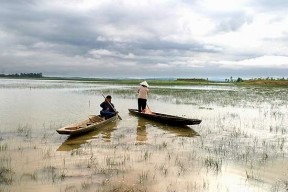
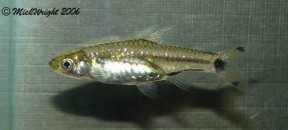
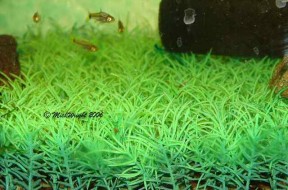
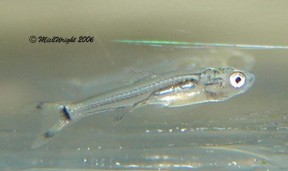
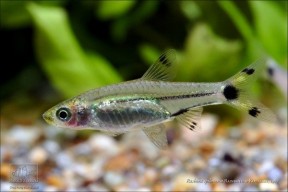

January 10th, 2015 at 9:18 pm
Your imperial and metric tank dimensions don’t add up.
January 18th, 2015 at 2:56 pm
Thanks for pointing this out – will fix asap.